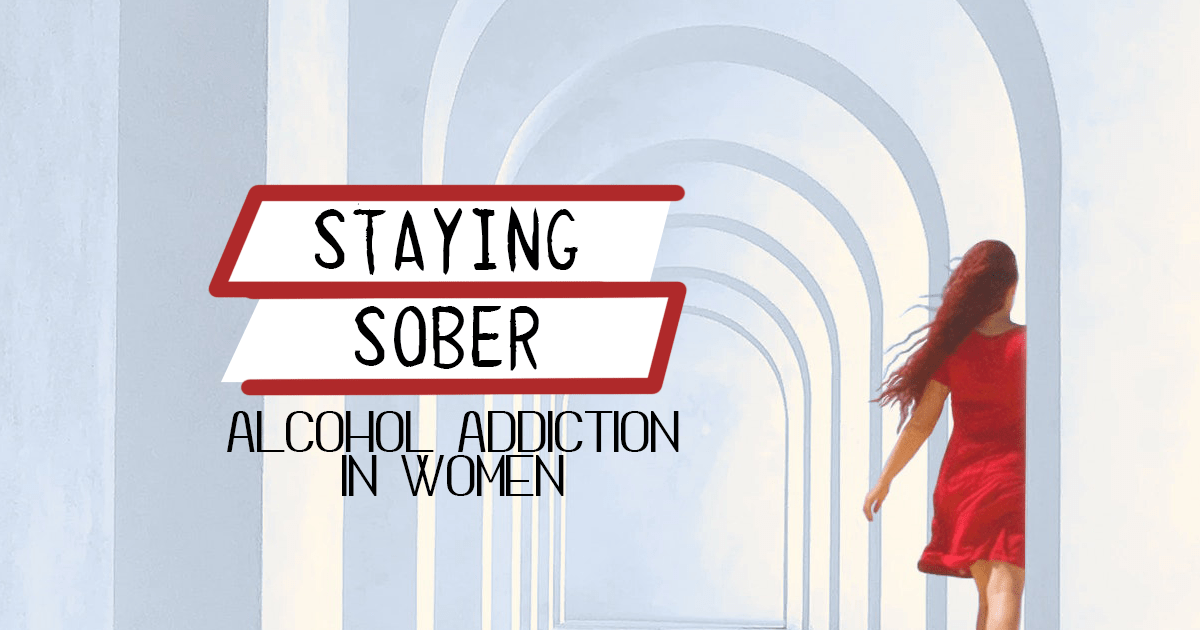
Rates of alcohol use and abuse are on the rise among women, according to the National Institute on Alcohol Abuse and Alcoholism. Alcohol addiction in women is a growing public health concern, particularly since women who drink have a higher risk of certain health conditions and problems compared to men.
During the pandemic, it seems that the rates of alcohol use and abuse among women have gone up even more, based on information from the National Institute on Drug Abuse.
Alcohol Addiction in Women
Women might not feel like they have an issue with their use of alcohol because it’s so widely accepted to drink. There’s also the concept many of us have about what an alcoholic is, and if you don’t fit into that, you may think there’s not an issue.
For many women, it’s important to realize the signs of abuse and addiction. The longer these problems are swept under the rug or minimized, the more complications they create.
Why Do Women Drink to Cope?
Women are more likely, statistically, to experience childhood abuse and sexual abuse and assault than men, according to the American Psychiatric Association. Among teenage and young adult women, depression, eating disorders, and suicide are going up.
Some of these factors could be driving an increase in heavy alcohol use. Stress and trauma from COVID-19 and isolation could be worsening already troubling trends and adverse effects.
In a study of college students early during the COVID-19 pandemic, researchers found increases in alcohol use among people reporting higher anxiety and stress levels.
“Mommy Wine Culture”
There’s a term you’ll see some people talking about in the media right now, which is so-called mommy wine culture.
You might have seen memes of women drinking alcohol to make it through their day and deal with their kids. There are often jokes on social media about needing or having a craving for alcohol, and it’s become an instilled part of not just motherhood but parenthood in general.
Parents can feel high levels of stress, and they might also feel trapped, with a drinking habit becoming a crutch, but one seen as socially acceptable.
Wine glasses and T-shirts with phrases like “Mom Juice” or “Mommy Needs a Drink” are popular.
These seemingly lighthearted jokes about caregivers who need to escape their daily lives with alcohol may not be a laughing matter.
For women, the idea of the wine mom lifestyle seems like a way to relieve stress and socialize, connecting with parents more easily.
There can be very real effects of excessive alcohol use on women, their health, and their families.
- Any type of self-medication is damaging. When parents use wine or other types of alcohol to deal with difficult emotions or as a coping mechanism, they’re not facing the situation head-on. They may be temporarily blunting whatever they’re feeling or going through at the moment, but that’s short-lived.
- Children are also quick to pick up on what parents are talking about—it can feel like their parents need substances to spend time with them.
- With childrens’ exposure to heavy drinking in the home, it becomes a risk factor for their own substance use later in life. Family history is very much linked to the development of addiction.
According to the Centers for Disease Control and Prevention (CDC), almost half of adult women reported drinking alcohol in the past 30 days.
- Nearly 13% of adult women report binge drinking, and on average, they do so four times a month. Binge drinking is having five drinks or more on one occasion.
- For the past 100 years, the gap between alcohol abuse in men and women has been closing. There was a 3:1 ratio for risky drinking habits in men versus women in the past, and now, that’s much closer to 1:1.
- In 2019, data found that women in their teens and early 20s would drink and get drunk at higher rates than male peers. It was the first time researchers saw these patterns since measuring related behaviors.
The trend seems to be rising simultaneously with other risk factors, including growing mental health conditions in young women. Researchers worry the ongoing effects of the pandemic could make both patterns worse as far as mental disorders and excessive drinking.
Even as women drink more, they’re less likely to get help than men for addiction and alcohol dependence.

How Alcohol Affects Women Differently Than Men
There are biological sex differences between men and women, including body chemistry and structure that means women absorb more alcohol.
Another gender difference is that women also take longer to metabolize alcohol. A woman drinking the same amount as a man is likely to have higher blood alcohol concentrations. The immediate response to alcohol and effects of drinking occur faster and will usually last longer in women.
These biological differences make women more likely to experience negative, long-term health effects of alcohol.
For example, alcohol increases the risk of negative effects like:
- Liver disease and similar medical conditions
- Cognitive decline and brain shrinkage as well as neurotoxic effects and alcohol-induced brain damage
- Worsening symptoms of co-occurring disorders like depression or bipolar disorder
- Women who drink a lot are at an increased risk for damage to the heart muscle and heart disease
- Even small amounts of alcohol consumption increase the risk of many types of cancers, including breast cancer.
- Heavy alcohol use can raise the risk of being a victim of sexual assault.
- Women who engage in heavy drinking behaviors are twice as likely to develop alcohol addiction and dependence on alcohol.
Signs of Alcohol Addiction
There are many possible signs of alcohol addiction in both women and men. Some signs of alcohol addiction to be aware of include:
- Drinking more or for longer periods than planned. When someone is experiencing an addiction to alcohol, they can’t limit excessive alcohol consumption.
- A woman with alcoholism might truly desire to stop, but they can’t. According to medical professionals, addiction creates changes in brain activity relating to judgment and impulse control.
- Anyone with a substance use disorder or alcohol use disorder will spend large amounts of time obtaining, using, and recovering from the effects. A woman addicted to alcohol may spend most of her time drinking and then recovering from hangovers.
- Continuing to drink despite known problems stemming from alcohol use is a sign of addiction.
- Drinking in dangerous situations, like drunk driving, is a red flag.
- Having symptoms of alcohol withdrawal when cutting back or stopping drinking. Alcohol withdrawal symptoms can include nausea, anxiety, sweating, insomnia, and shakiness. Alcohol withdrawal syndrome can also be severe, including delirium and seizures.
- Alcohol withdrawal seizures or alcohol withdrawal delirium and other severe symptoms require immediate, emergency medical attention.
Why Aren’t Women Getting Alcohol Treatment?
Despite historically high alcohol use and abuse rates among women, they aren’t receiving substance abuse treatment. Researchers are finding alcoholic women are significantly less likely than men with substance use disorders to get treatment.
There are likely a variety of factors that are contributing to these trends. Women have family pressure, making them reluctant to admit a problem or seek treatment. As a woman, you might have less financial freedom and more responsibilities as far as caring for a family, so it’s harder to get treatment.
Alcohol addiction in women is a growing problem raising alarms throughout the country. Alcohol intake rates are soaring, as is the risk for alcoholism and psychiatric disorders.
If you’re a woman struggling with alcohol abuse or addiction, or you have a loved one who is, recognizing a problem and getting help are potentially lifesaving. Call 866-600-7709 and get in touch with Anchored Tides Recovery to learn more about help if you’re a woman who is alcohol dependent or are experiencing signs of alcohol abuse in Southern California.































